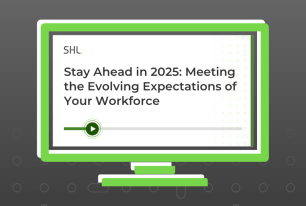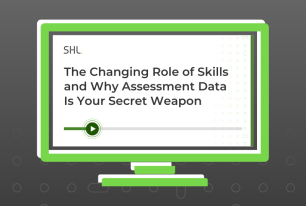How to Make Real Change with Your DEI Efforts
How standard processes throughout the employee lifecycle create the infrastructure needed to create a diverse and inclusive work environment.
Share
In part 1 of this series, we discussed why DEI efforts often fail within organizations, and the critical role your people play in energizing efforts to succeed. In part 2, we will discuss how standard processes throughout the employee lifecycle create the infrastructure to stand up and sustain efforts to create a diverse and inclusive work environment.
The lack of standardized or consistently reinforced talent lifecycle processes is a huge barrier to the success of DEI efforts. Lack of mutual understanding between recruiters and hiring managers means qualified candidates are screened inconsistently and inaccurately.
The lack of standard interviews allows bias to creep into selection decisions. Inconsistent onboarding creates variable engagement and increased turnover. Lack of objective data in the succession planning process creates vicious cycles of systematic inequality in promotions… And the list goes on.
A Checklist for Creating an Inclusive Talent Strategy
Standard DEI initiatives must be woven into each stage of the employee lifecycle to take root. To get a gauge on where you are today, see the checklist of these stages below.
As you read through, ask yourself the following questions: Can I articulate my organizational strategy in this area? In what ways does this strategy promote a diverse and inclusive culture? Is that strategy executed consistently across the organization? And most importantly, can my front-line leaders articulate this strategy?
-
Recruitment: Sourcing candidates from diverse talent pools and attracting them to apply.
-
Employee selection: Creating an engaging candidate experience that objectively identifies those most likely to perform successfully in the role.
-
Onboarding: Providing new employees with the tools, resources, training, time, and opportunities they need to become productive.
-
Engagement and retention: Providing clarity and resources for success, fostering an inclusive and supportive culture, growing strong leadership skills, offering opportunities for career growth.
-
Development: Providing employees opportunities and means to build skill and ability through on-the-job experience, learning from others, and training.
-
Performance management: Ensuring employees understand their current level of performance, their current goals, and providing regular feedback.
- Talent review and succession planning: Assessing the current state of talent across the organization and identifying strong performers with the potential and desire to take on a higher-level role.
Steps for Building an Inclusive Process Across the Employee Lifecycle
Looking at this, if your organization does not already have standard processes in place today, start with some of these basic steps:
- Create accurate job descriptions that lay out the responsibilities and competencies required for success in each job or job family.
- Post all of your job openings internally and externally to provide opportunities to grow talent and to continuously source diverse talent.
- Take the necessary time and effort to ensure a diverse candidate pool through intentional sourcing.
- Use standardized structured interview guides consistently across the organization.
- Require interview and hiring training to ensure objectivity and teach hiring managers how to avoid biases in the hiring process.
- Utilize an organization-wide competency model to align business and people strategy and give you a consistent language to discuss talent.
- Leverage learning and development to create an infrastructure to educate and reinforce DEI initiatives.
- Tie individual financial incentives to inclusive workplace metrics.
- Include items related to creating an inclusive workplace in engagement or other organizational surveys.
- If you have a board of directors, ensure the makeup of the board reflects the diversity of the organization and populations you serve.
How to Troubleshoot Your Inclusive Talent Strategy If It Is Not Working
If you already have standard processes in place, but those processes are not making an impact, ask yourself:
- Are our practices being implemented consistently across the organization? Why not?
- Do all our HR practices incorporate DEI efforts?
- What objective data (assessments, etc.) do we incorporate into our people decisions and development efforts today?
- What stated goals and expectations do we have around DEI? How are our leaders held accountable?
To this point we have focused on using standard HR processes to improve objectivity and fairness to drive increased diversity. Diversity is the first step, but these initiatives will fail if there is not a culture of inclusion. In other words, people must feel welcomed, heard, and represented for the diversity within the organization to succeed.
Some initial steps may be the creation of Employee Resource and Affinity Groups, company cultural celebrations (e.g. Black History Month or Pride Month) and company statements about commitment to Diversity, Equity, and Inclusion.
But the real measure of success comes in the culture and environment created within the organization. Is there an atmosphere where diverse opinions, perspectives and ideas belong and are valued? Some questions to consider as you go down the path of creating processes to foster inclusion:
- Do our leaders believe there is a strategic benefit for growing a diverse and inclusive workforce?
- Does the way we incentivize our people today strengthen or take away from our efforts to build a diverse and inclusive workforce?
- How do we measure our progress and obtain our diverse employees’ opinions? (e.g. engagement surveys).
- What does our leadership look like? Do all employees see themselves represented in leadership to inspire a career path for themselves?
- What is our messaging around DEI? What do we say externally? Internally? Do we follow through on our statements and commitments?
Creating a culture where all facets of diversity are valued, respected, and utilized is critical to retaining diverse talent. As discussed in Part 1 of this series, the first step in implementing DEI strategies that lead to meaningful and sustainable culture change is engaging your leaders and energizing a network of champions throughout the organization.
This excitement and commitment must then be supported through standard and consistently applied organizational processes to build momentum and make it easy for employees to sustain their efforts.
Next, in the third and final part of this series, we will explore how organizations can use technology to scale and measure their efforts.
Until then, take a deeper dive into learning about incorporating diversity, equity, inclusion, and belonging into your hiring process by listening to this recent webinar.









